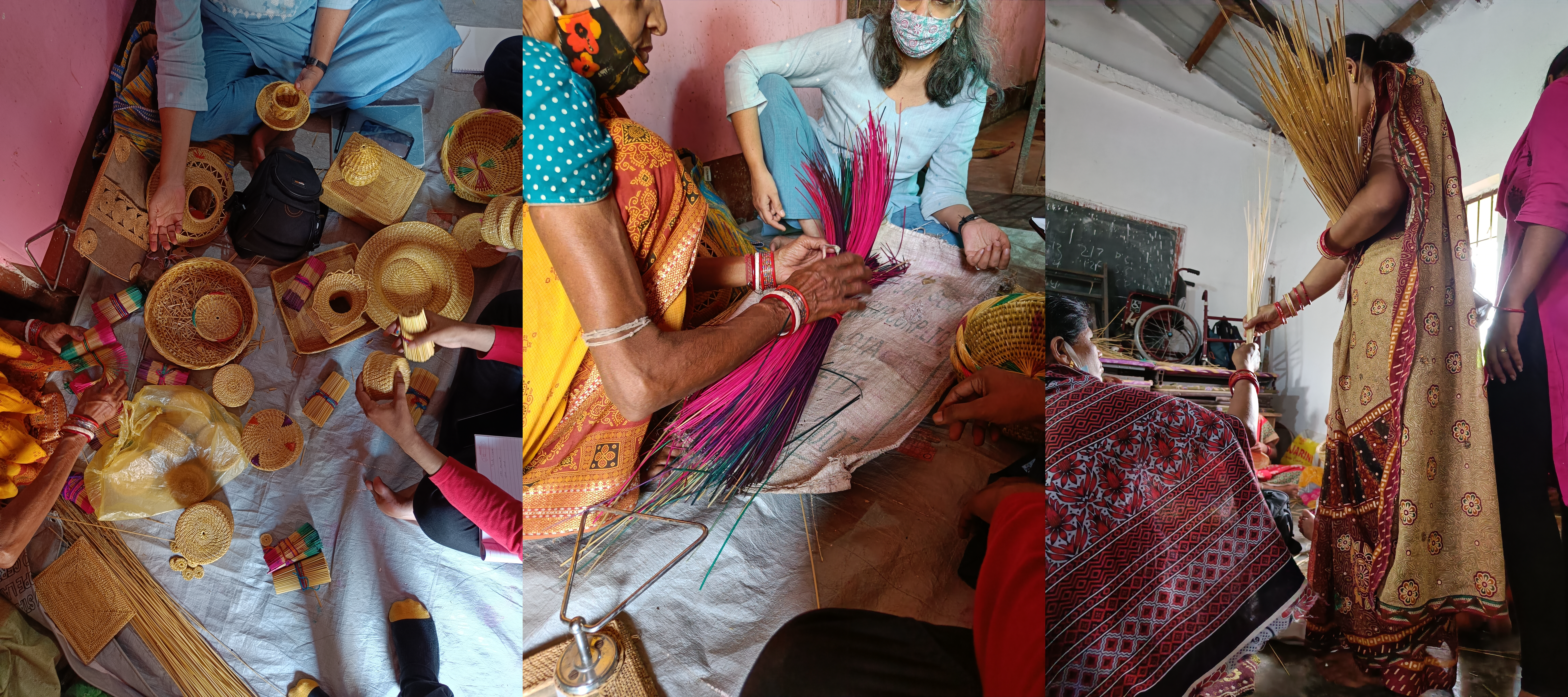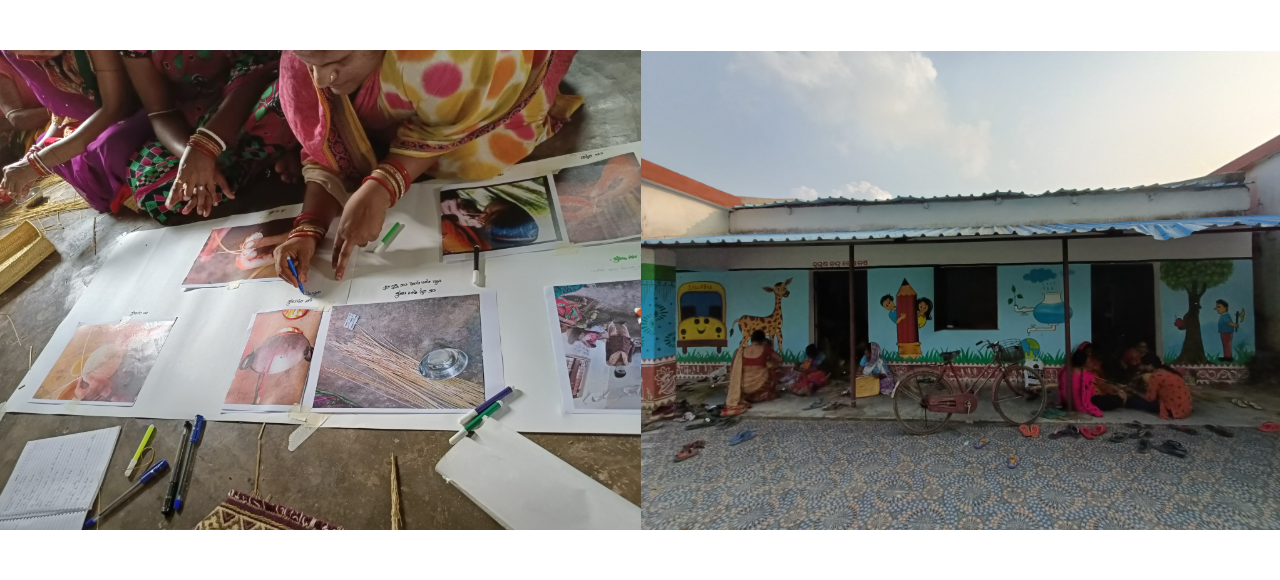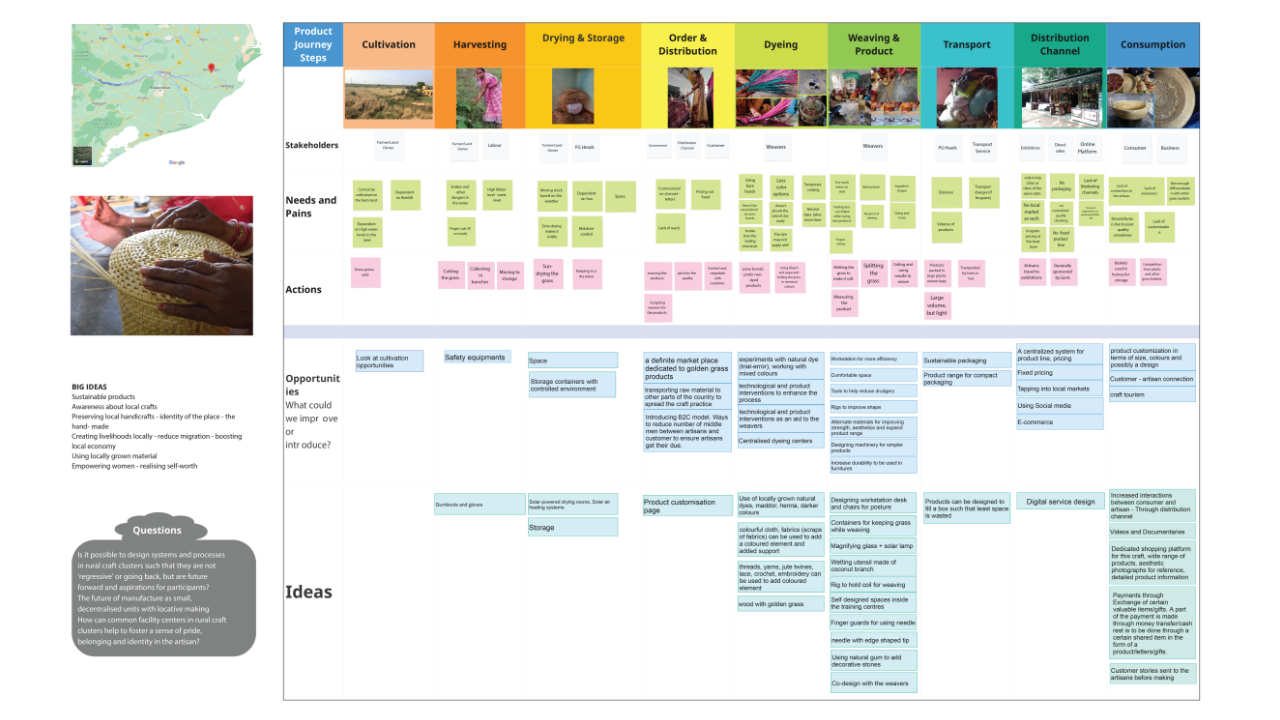Golden Grass Weavers
Odisha Government Collaboration (2021)
OVERVIEW
Summary
Golden Grass Weaving is one of the 16 handicraft forms from Odisha.
The Government was promoting artisans through its training programs and trying to establish an independent organization for artisans.
Training centers were being created throughout different districts of the state.
SELCO foundation, a non-profit organization partnered with the Government of Odisha for designing such training centers.
We collaborated with the SELCO foundation to research gaps and opportunities for design interventions.
Tools
Miro,
Adobe suite,
Role
UX Researcher
(team of 4)
Client
SIDAC
Odisha Govt
Timeline
Oct 2021 -
Dec 2021
PROCESS

PROBLEM DEFINITION
Mindmap
We began our research by connecting with the SELCO foundation.
They gave a brief presentation about the current status of the project and their overall plans.
We started going through previously done researches to get an overview of the handicraft process.

Objectives
Upon reflection, we divided the project into four key objectives:

SECONDARY RESEARCH
Handicrafts of India
We researched more about dyes, possible products, markets, pricing, schemes for artisans, international handicraft communities, etc.
It was difficult to get information about the Golden Grass Handicrafts as not much content has been put up online.

Market Research
Then we looked into handicraft products made by similar kind of materials.

PRIMARY RESEARCH
Field trip
We planned field visit to Kendrapara district of Odisha to understand the working from ground level.
We visited few training centers and SIDAC office at Bhubaneswar.

Interview
We interviewed a lot of trainees next few days. They shared their experience of the 6 month training program.
It was difficult to communicate as most of the trainees only knew Odia(spoken). Few women helped us with translation.
They showed us the process and different weaving styles for creating different products.


Probe
We created probe booklet with different activities aimed to gather data. We couldnt complete all the activities due to time constraints.

Process mapping
After coming back from Odisha we compiled all the probes, interview transcripts and notes to create a process map.
In this map we noted down the different stages of the handicraft product right from the cultivation of grass till selling.

Ecosystem mapping
We created a map of different stakeholders of the current training program to understand the ecosystem.

IDEATION
Brainstorming
We worked on few concepts of tools and technology that can help to aid the artisans. All of the research content and
ideas were then handed over to the SELCO group for further research.


REFLECTIONS
This industry research project was a valuable learning experience, especially as my first. Initially, I was nervous about traveling and interacting with people whose language I didn’t know, but I soon realized that non-verbal communication, like gestures, could bridge gaps in understanding. Throughout the process, I developed a better understanding of how to conduct interviews with sensitivity and empathy, which was crucial in gaining honest insights from the participants. Engaging with them in a respectful, thoughtful way allowed me to build trust and ensure the research remained user-centered.
In hindsight, fully immersing myself in the craft by creating a product from start to finish would have provided deeper insights into the challenges. Spending more time with the trainees would have further enriched my understanding of their journey. Another important takeaway is the need to have backup plans for all research activities to navigate unexpected challenges. Overall, this project taught me the importance of adaptability, empathetic communication, and meticulous preparation.

